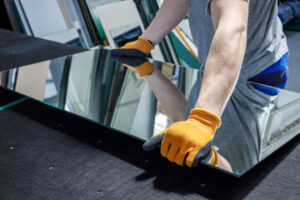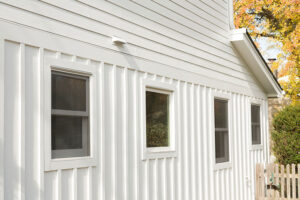Shipping is an integral part of e-commerce business, and the last mile delivery experience is the cornerstone on which your customer loyalty hinges. Performing a parcel audit can help you optimize your shipping costs and hold your carrier accountable.

Choosing the right parcel audit provider makes all the difference. Investing in one that offers real-time data access, frequent rate audits, comprehensive support and strategic account management can have significant impacts on your shipping operations. Click Here to learn more.
Real-time data integration allows you to integrate different data sources in a way that offers consistent and timely access to information. There are many ways to do this, including manual data integration, middleware integration, application-based integration and uniform access integration. Regardless of the method, real-time integration must be fast and efficient to support the business needs of your organization.
In order to get the most out of your data integration, it is crucial that you work with a team that understands your organization’s specific requirements and can deliver on the speed and accuracy of information. Additionally, it’s important to involve workers in the decision-making process when choosing new digital tools, as this will help them feel like a part of the process and increase adoption rates.
The most effective approach to integrating data in real-time is through a continuous delivery system (CDC). CDC delivers updates to data in small, frequent batches and minimizes performance overhead while synchronizing information between multiple systems. It also supports diverse IT landscapes and complex, multi-platform environments by using a publish-subscribe model that allows applications to subscribe to a central repository for data updates.
A small parcel audit or freight invoice audit is a service that focuses on lowering shipping costs by identifying errors in carrier invoices and billing. It typically involves a detailed review of shipping invoices and comparing them to the Carrier’s pricing agreements. This helps to identify overcharges and missed discounts. It also identifies opportunities for refunds for late deliveries or incorrect surcharges.
Generally speaking, these services are offered by a third-party company that specializes in logistics and/or transportation management, or by software that performs the same functions. The software option is usually less expensive than hiring a firm to manually perform an audit, but it still requires some technical know-how and shipping industry experience.
As you can imagine, implementing these services into your company is a big undertaking. In order to avoid getting overwhelmed, it’s a good idea to start small by incorporating these services into one or two areas of your business that will have the greatest impact. This will help your workers become accustomed to the benefits of these services, and will make it easier to roll out additional features down the line.
Frequent Rate Audits
The more you know about your shipping costs, the better position you’re in to negotiate with carriers. Whether you’re a small parcel shipper or a large freight carrier, taking the time to regularly audit your shipping invoices and accessorial charges is key to lowering your shipping rates. These audits can be conducted internally or through an external software solution like ShipSigma. When done right, they can unlock a lot of savings—and ensure that your negotiated carrier rates and discounts are being applied.
The best way to get the most out of your shipping audits is to work with a provider that offers a complete package. This can include everything from real-time data access to a team of experts that will analyze your data and billing information to find opportunities for savings. In addition, a reputable provider will also conduct regular and comprehensive carrier rate audits to help you identify errors in your invoices and to catch potential overcharges.
A good provider will automatically download your carrier’s weekly invoice files and perform an in-depth analysis of each line item to find misapplied rates, billing errors, and unauthorized charges. They’ll also look at your carrier’s accessorial fees to determine if they are valid and if they can be eliminated, saving you money on shipping costs.
Whether it’s a residential delivery fee, address correction, non-standard physical dimensions, or dangerous goods charge, a carrier will typically apply an accessorial charge to your shipment for services outside of the bounds of your negotiated base rates. These additional charges can add up to a significant amount of your overall shipping bill, so it’s important to keep them in check. A good auditor will review your shipment data and your carrier contracts to make sure that each and every accessorial charge is valid and that you’re not being overcharged.
Finally, a good audit will pay close attention to your on-time delivery statistics and commitments. It’s estimated that over $2 Billion in refunds go uncollected yearly because of late deliveries. This is another area where most carriers are willing to provide refunds if you know how to ask.
Comprehensive Support
The best way to ensure that you’re maximizing your shipping spend is through a comprehensive parcel auditing process. A provider that offers real-time data access, frequent rate audits, and strategic account management can provide substantial savings on your parcel delivery costs. By leveraging these services, you can make the most of your transportation spending and increase the effectiveness of your business’s operations.
Regardless of the size of your shipment, a thorough analysis of base transportation charges and accessorial fees will help uncover mistakes or overcharges on your shipping invoices that can add up quickly. A quality parcel auditing company will review each line item of your FedEx, UPS or DHL invoice to expose inaccurate charges and recover unwarranted fees. This will help you avoid paying unnecessary base transportation rates, accessorial charges and surcharges.
In addition to addressing shipping rate errors, an effective parcel audit will also examine your carrier’s performance against their service level agreements (SLA). A poor delivery track record can cause your customers to be less likely to shop with you in the future, leading to lost revenue that isn’t easily recovered through one-time refunds from your carriers. By analyzing your invoices and monitoring delivery SLA breaches, you can leverage this information during contract negotiations to negotiate lower shipping rates.
A comprehensive parcel auditing service will examine each line item of your shipment’s invoice to ensure that you’re billed correctly based on your unique contractual agreement with your carrier as well as their service standards. This will allow you to identify billing errors and collect service refunds that are typically overlooked due to time limitations, resources or technology.
A comprehensive package audit will analyze your shipment data based on the size and weight of each individual piece, as well as the number of pieces shipped in a single package. These factors will determine whether a shipment is considered a small parcel or freight. Small parcel shipments are limited to 70 pounds in weight, while any package that weighs more than that will be classified as freight and may incur additional surcharges.
Strategic Account Management
One of the most obvious benefits of a parcel audit is that it saves businesses money. If your carrier is overcharging you, or if you’re paying too much for a particular service, an audit can help you get those costs back. But the perks of an audit go far beyond that. For example, an audit can also uncover shipping cost trends that you might not have otherwise been aware of. This information can give you the insights and data points you need to work with your carriers to reduce your underlying transportation costs.
Many providers offer parcel audit software that can automatically keep track of all your shipping invoices, payment, and transactions. However, you’ll need some technical know-how to make this software useful. A better approach is to partner with a provider that offers both parcel audit software and a full range of services. This way, you can get the best of both worlds: the power of automation and the expert guidance you need to maximize your savings.
Choosing a provider that offers both real-time data access and frequent rate audits can yield the biggest improvements in your shipping operations. A provider that conducts weekly audits will be able to detect and address any rating errors promptly. This can be especially crucial during times of contract rate changes and when onboarding new accounts.
Strategic account management is a customer-centric process that helps businesses identify and grow their most important accounts. The top performers in this field have a rare blend of skills and expertise, including business acumen, interpersonal abilities, and strategic thinking that enables them to anticipate client needs and deliver exceptional value.
Achieving this requires a dedicated team that can focus on the needs of key accounts and prioritize their delivery and service standards. Unfortunately, as your customer service and sales teams spend time on the day-to-day demands of second tier accounts, your top accounts can often feel overlooked.
A comprehensive parcel audit can reveal ways to improve your service and delivery standards to your most valuable customers. And when combined with a dedicated team, these insights can help you develop an effective strategic account management process to keep your most important customers happy and loyal.


